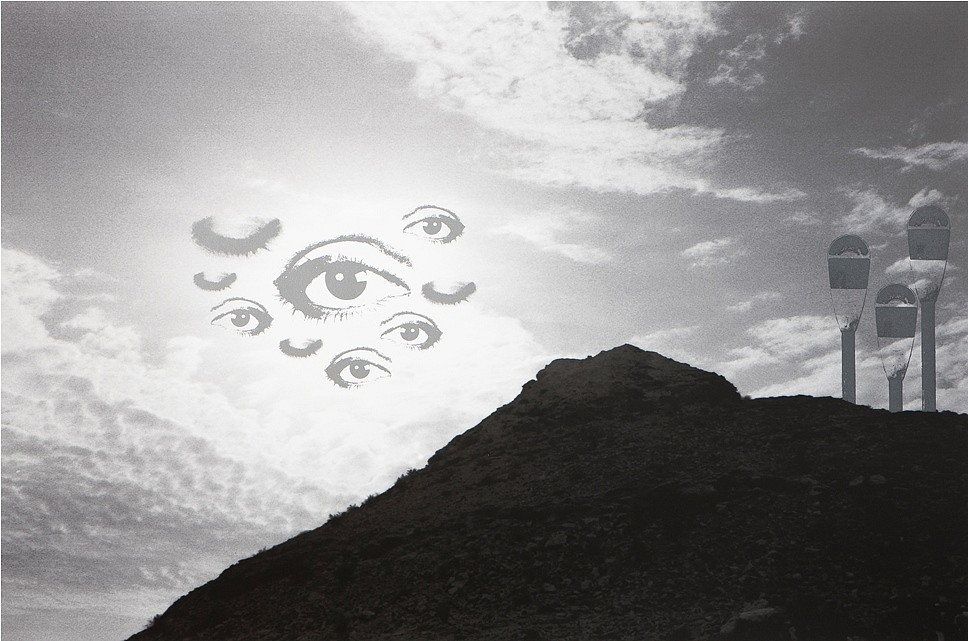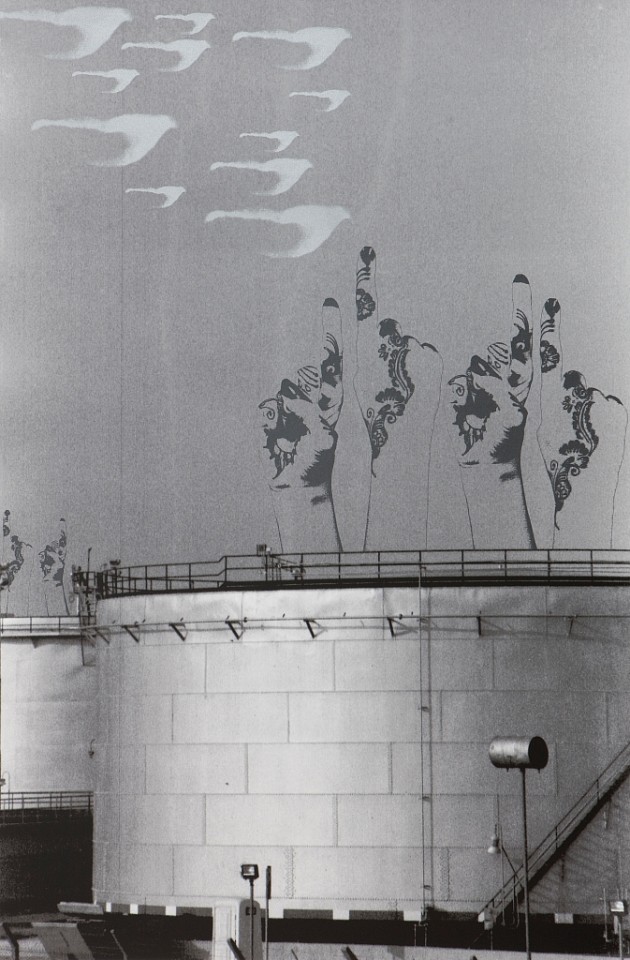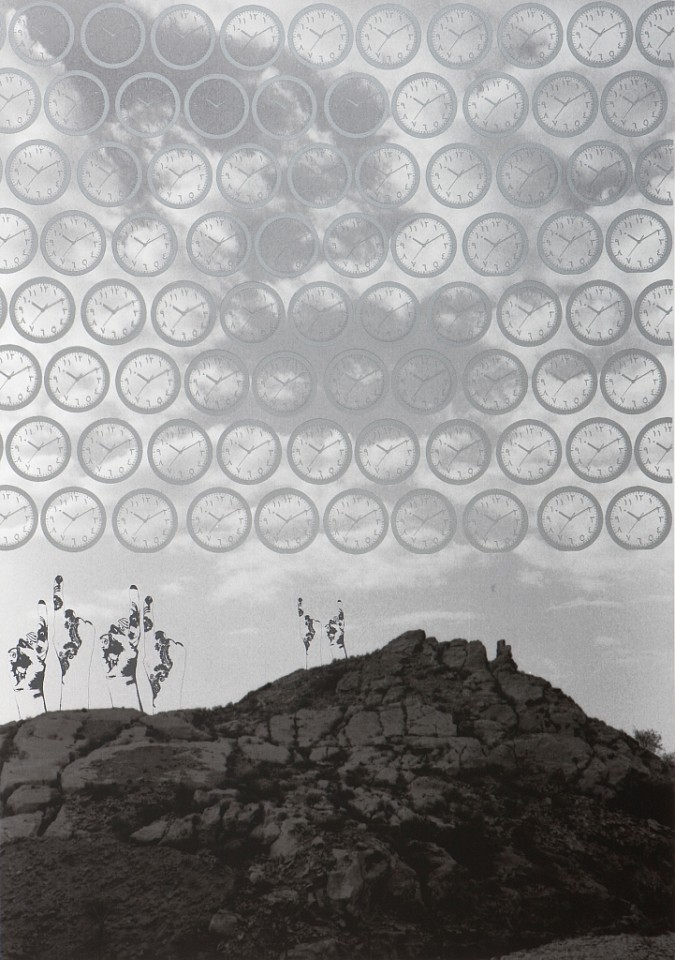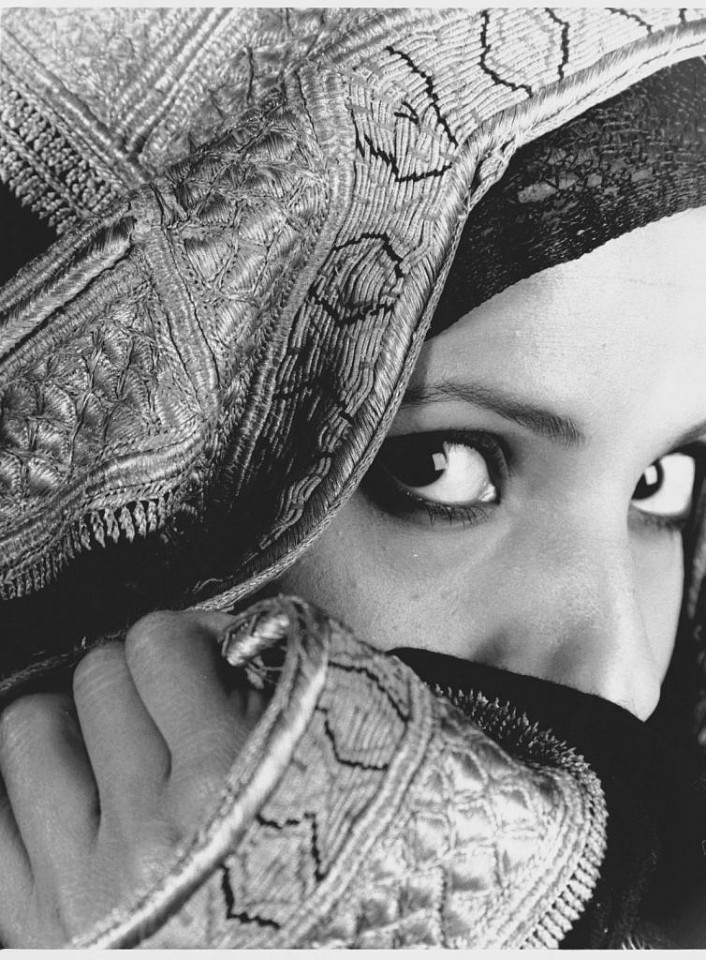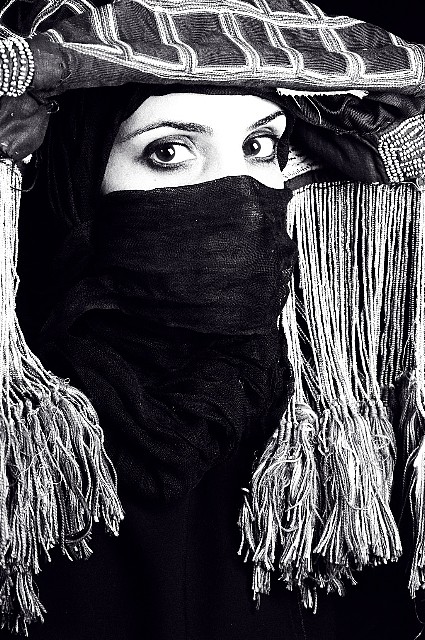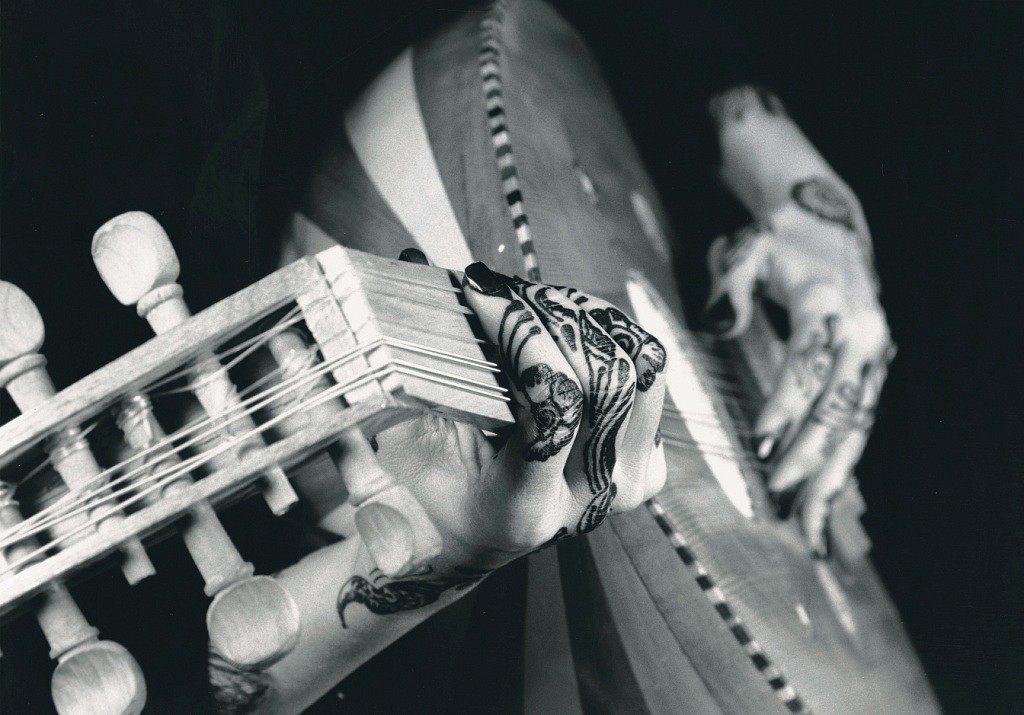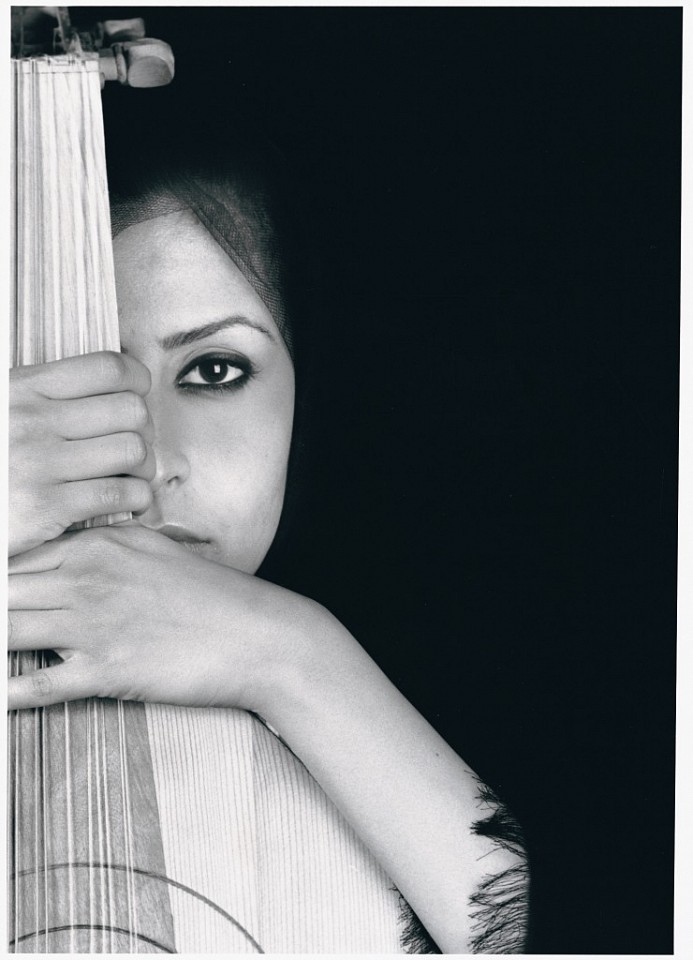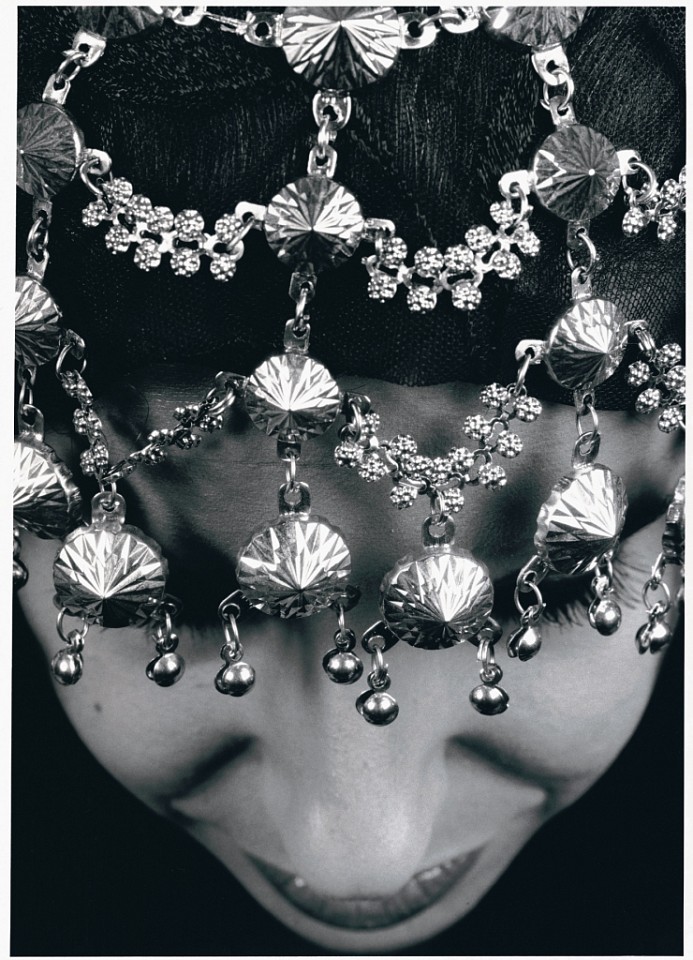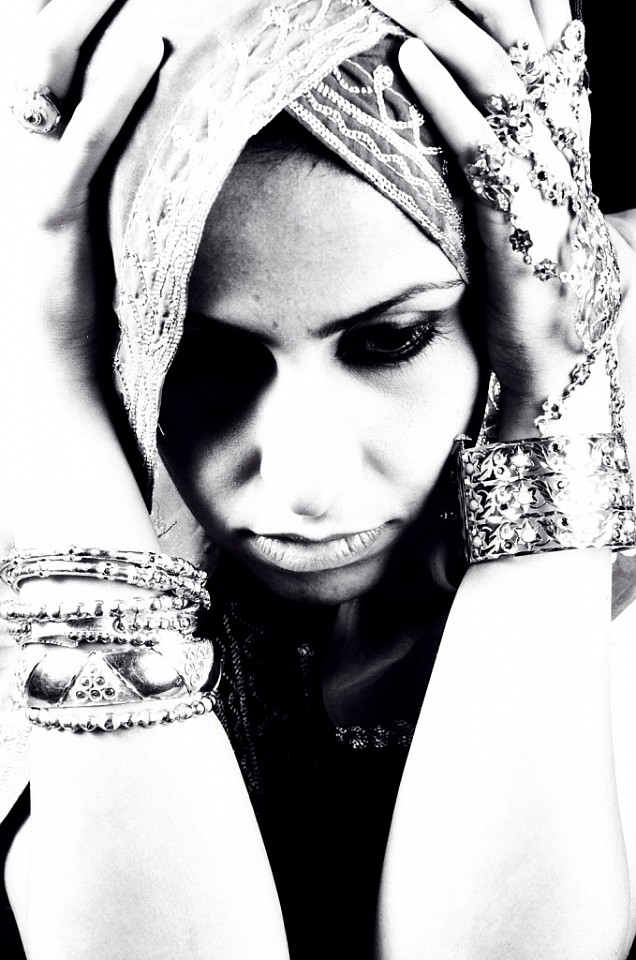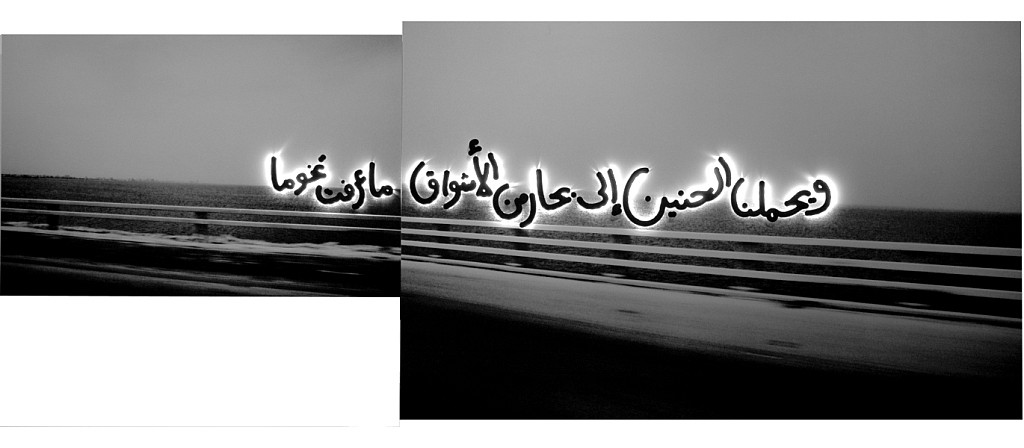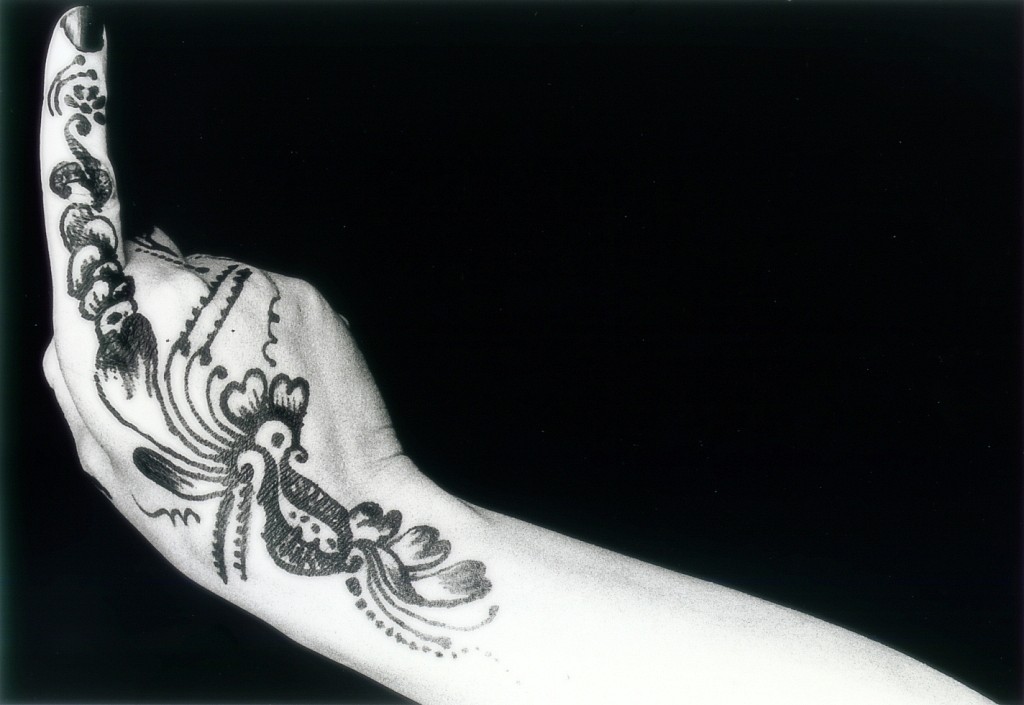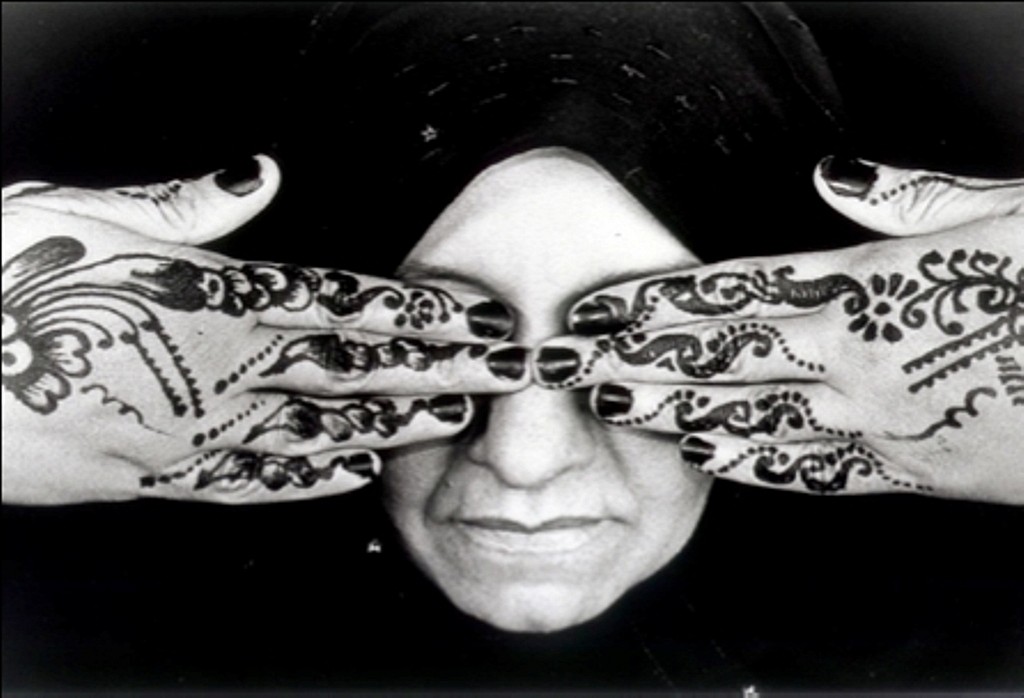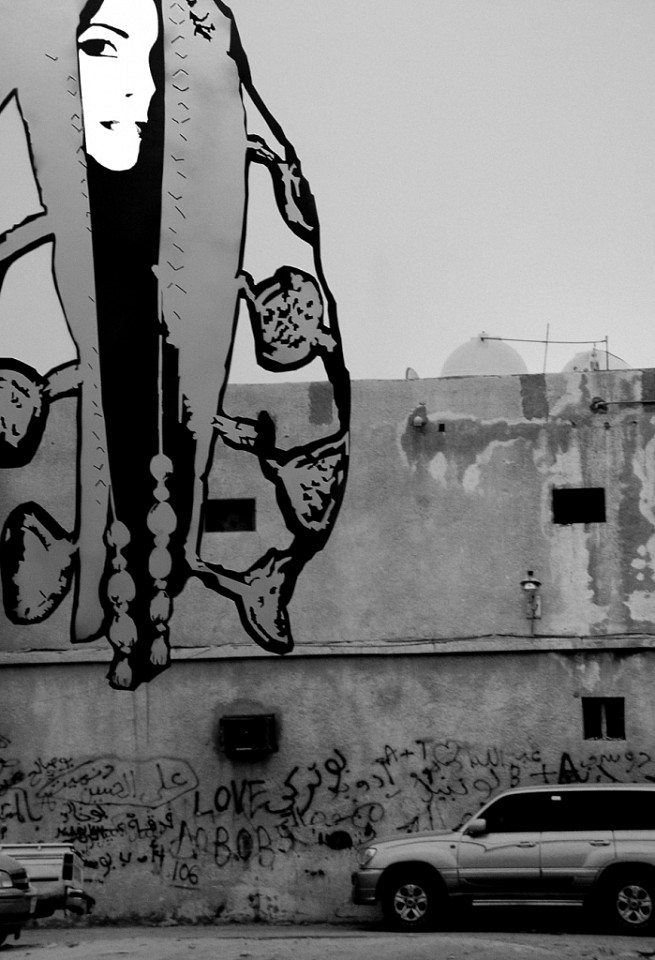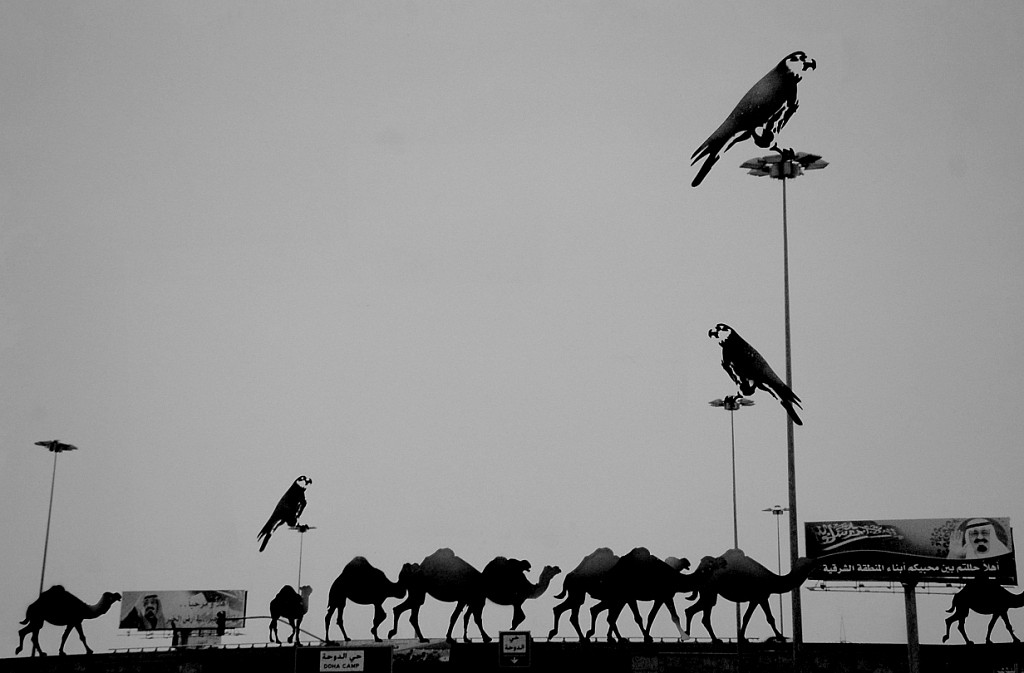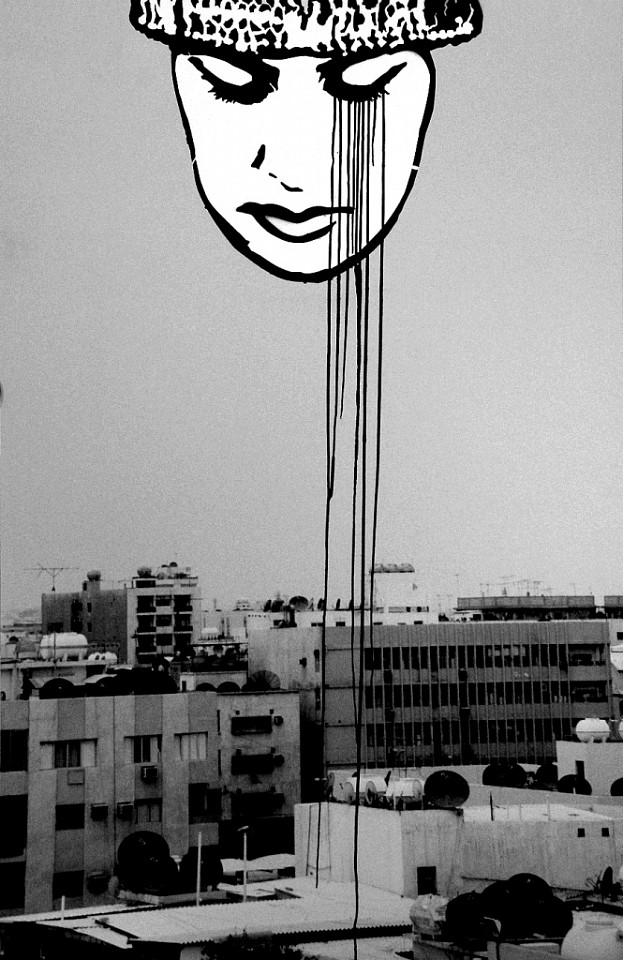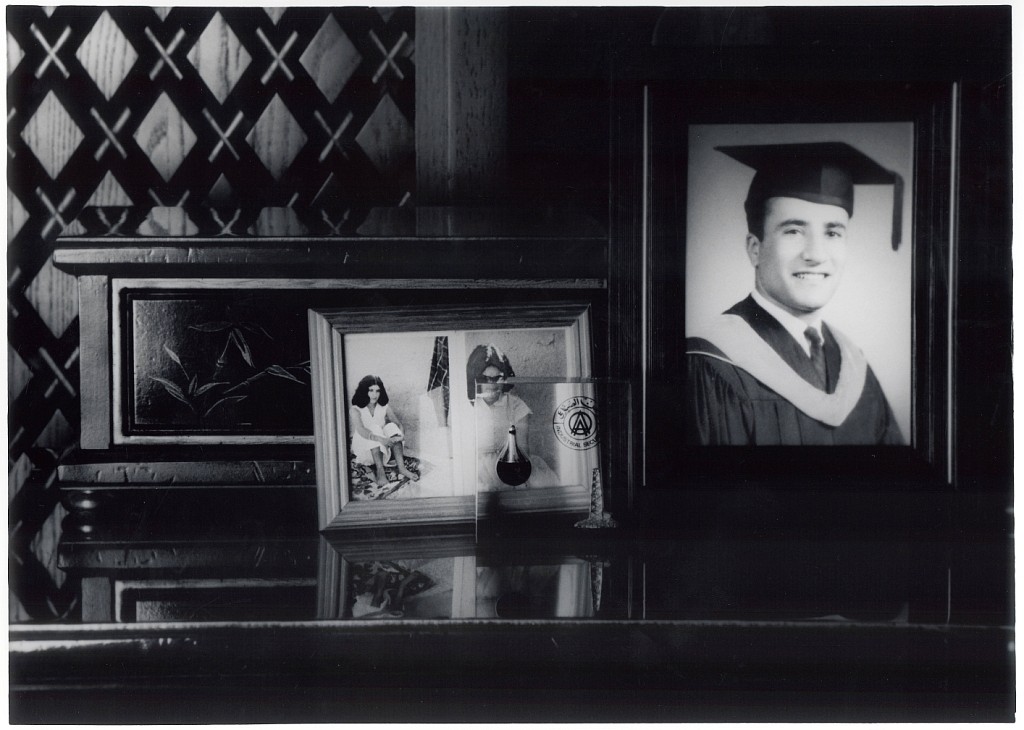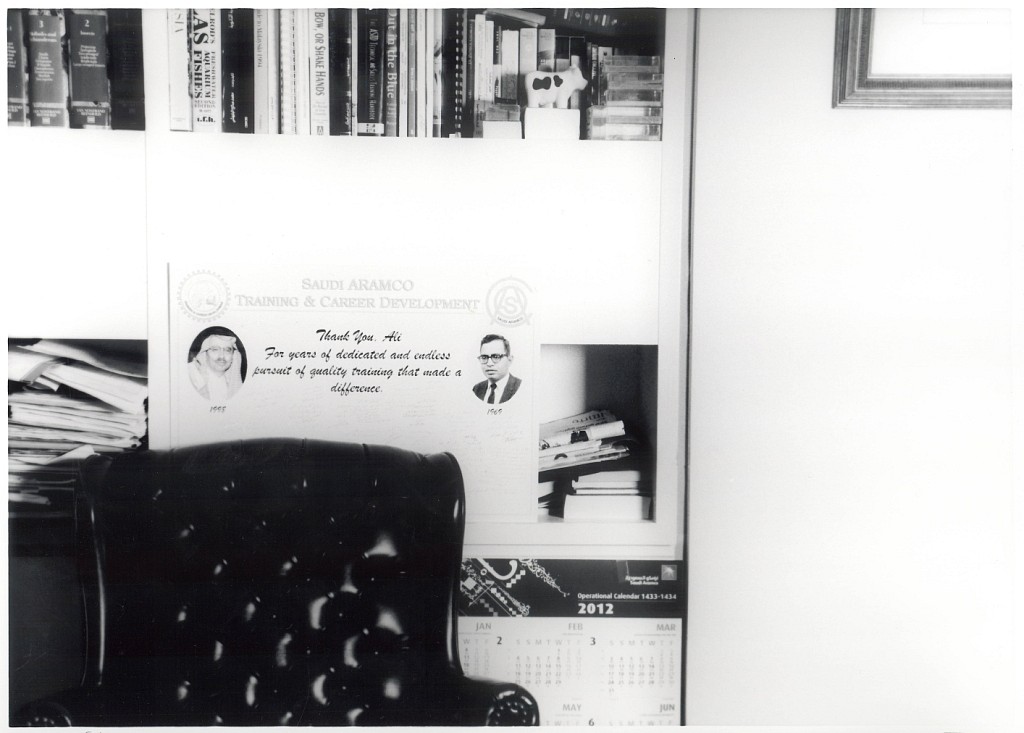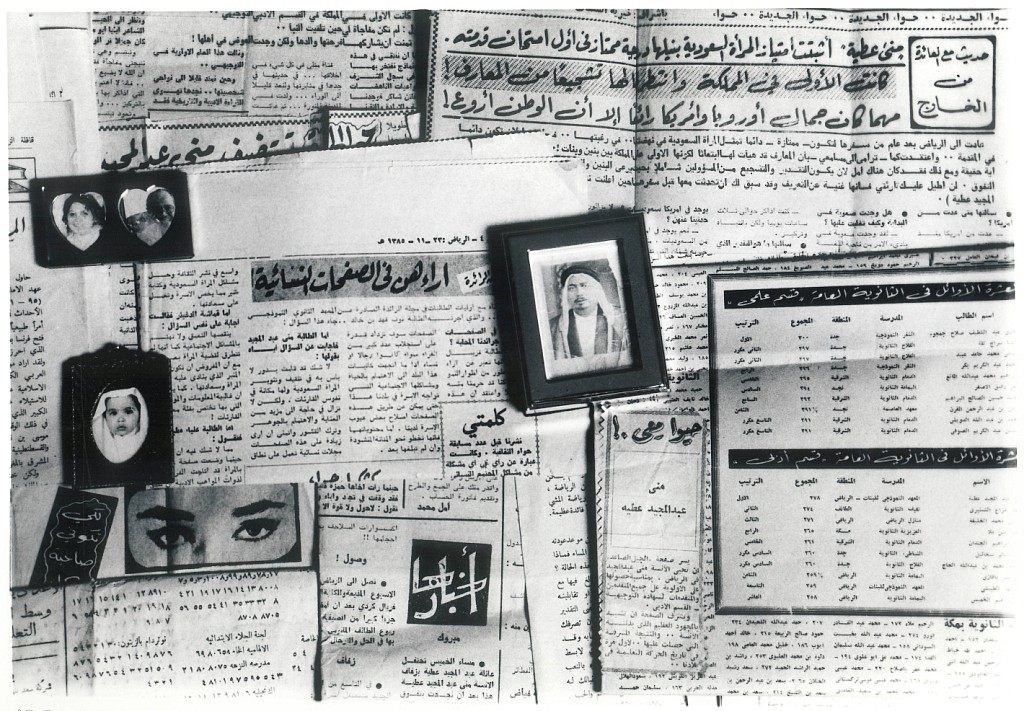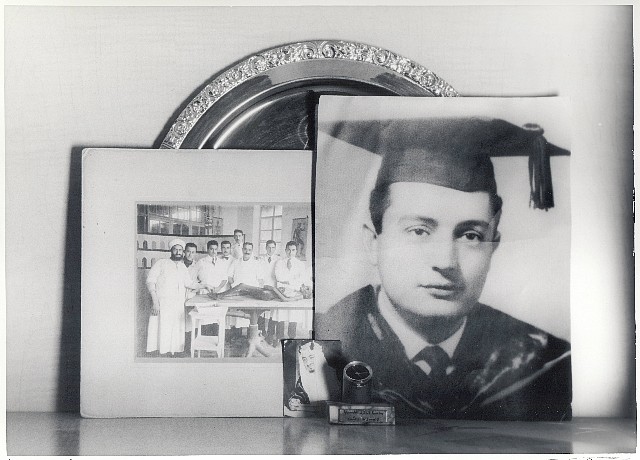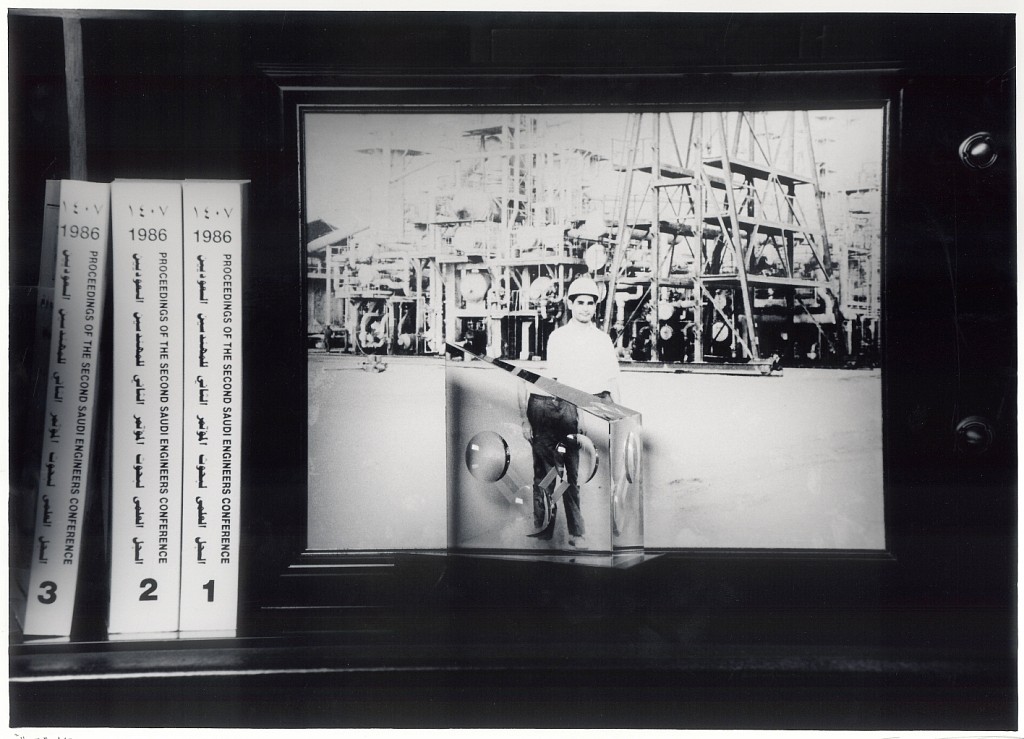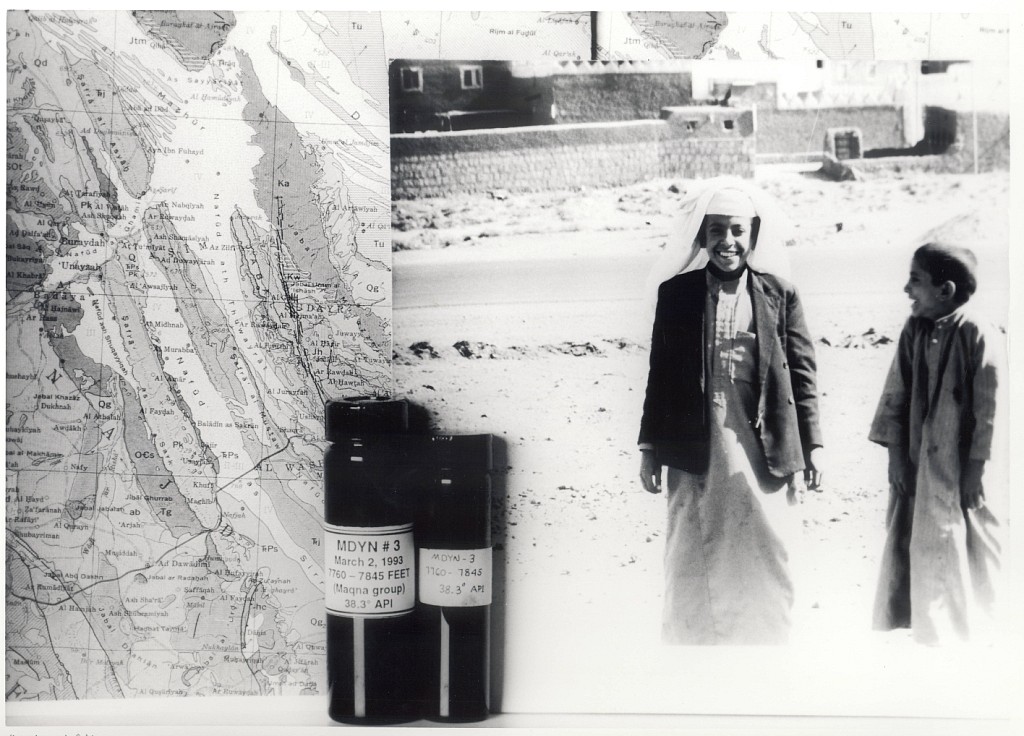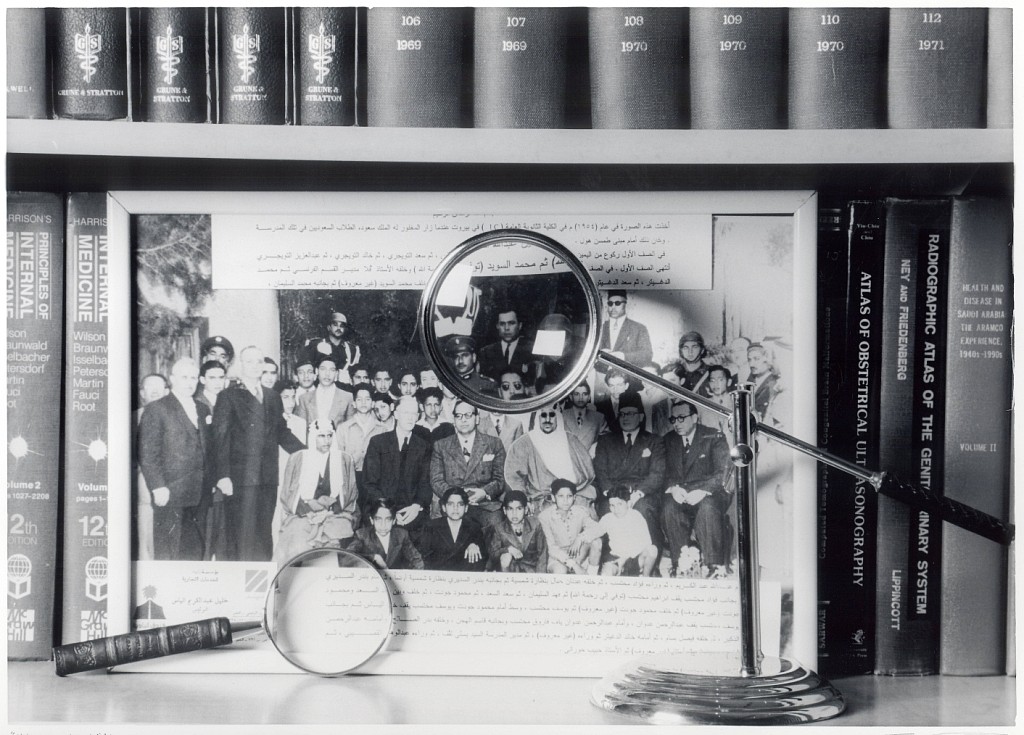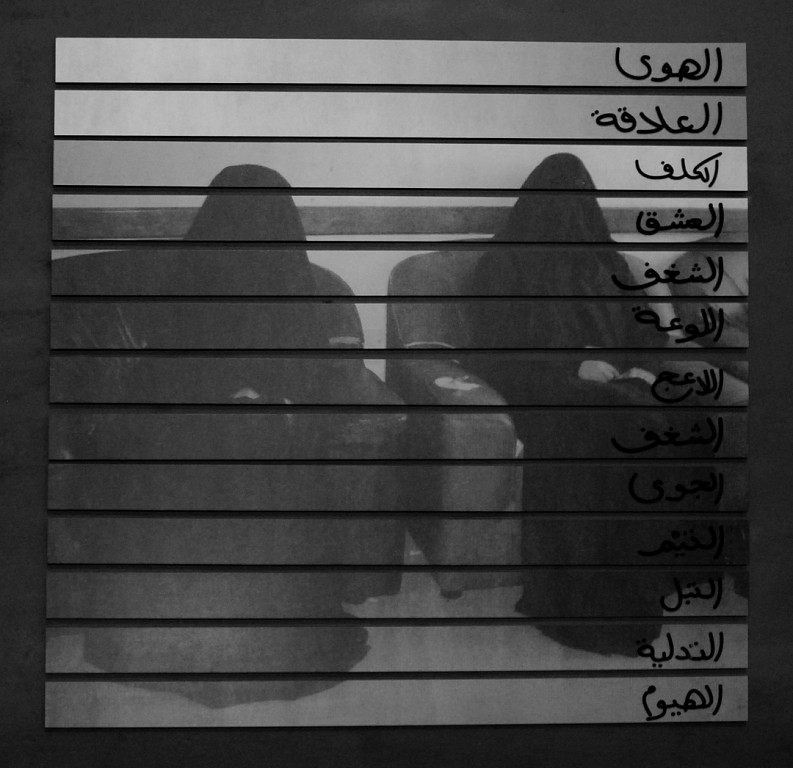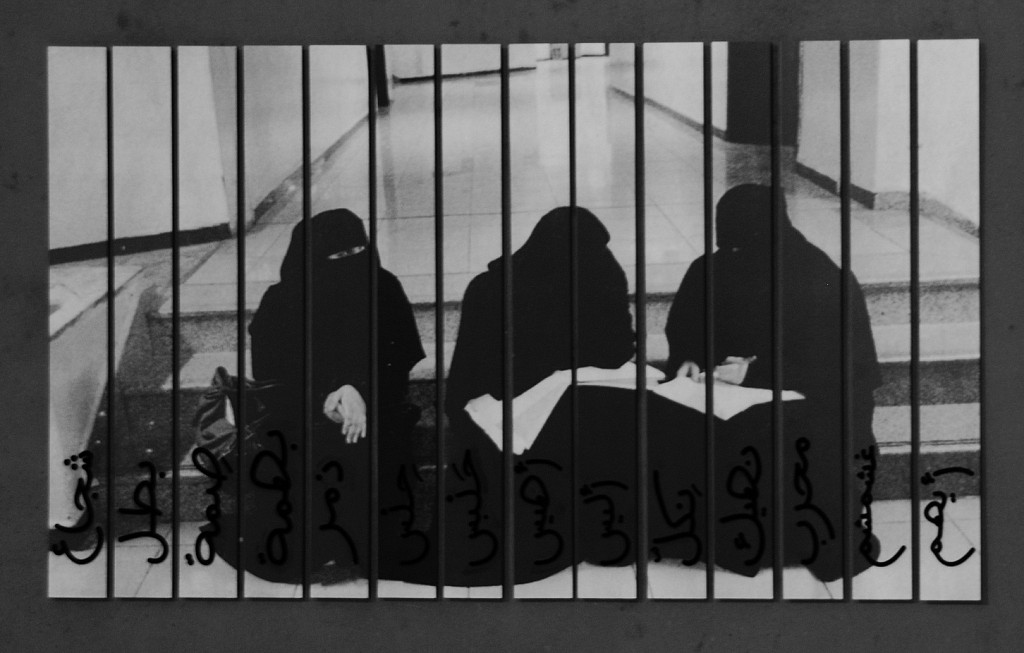Manal Al Dowayan
Landscape Of The Mind IV, 2009
Mixed Media on Paper
101.6 x 152.4 cm, Edition Size: 5
From 'Landscapes Of The Mind' Series
MAD0015
Manal Al Dowayan
Landscape Of The Mind VI, 2009
Mixed Media on Paper
101.6 x 152.4 cm, Edition Size: 5
From 'Landscapes Of The Mind' Series
MAD0016
Manal Al Dowayan
Landscape Of The Mind VII, 2009
Mixed Media on Paper
152.4 x 101.6 cm, Edition Size: 5
From 'Landscapes Of The Mind' Series
MAD0017
Manal Al Dowayan
Landscape Of The Mind VIII, 2009
Mixed Media on Paper
152.4 x 101.6 cm, Edition Size: 5
From 'Landscapes Of The Mind' Series
MAD0018
Manal Al Dowayan
Look Beyond The Veil II, 2009
Silver gelatin fibre print
51 x 41 cm, Edition Size of 10
From 'Look Beyond The Veil' Series
MAD0006
Manal Al Dowayan
Look Beyond The Veil III, 2009
Silver gelatin fibre print
41 x 51 cm Edition of 10
From 'Look Beyond The Veil' Series
MAD0007
Manal Al Dowayan
Silent Song, 2009
Silver gelatin fibre print
41 x 51 cm, Edition of 10
From 'Look Beyond The Veil' Series
MAD0008
Manal Al Dowayan
Silent Song II, 2009
Silver gelatin fibre print
51 x 41 cm, Edition Size: 10
From 'Look Beyond The Veil' Series
MAD0009
Manal Al Dowayan
Gold Chains, 2009
Silver gelatin fibre print
51 x 41 cm, Edition Size: 10
From 'Look Beyond The Veil' Series
MAD0010
Manal Al Dowayan
Gold Bracelets, 2009
Silver gelatin fibre print
51 x 41 cm Edition Size: 10
From 'Look Beyond The Veil' Series
MAD0011
Manal Al Dowayan
Nostalgia Carries Us But Desire Keeps Us Away - Diptych, 2010
Archival gicl'e print mounted on dibond & Aluminum lettering LED back lights.
152 x 101 cm & 100 x 66 cm, Edition Size: 2
From 'And We Had No Shared Dreams' Series
MAD0022
Manal Al Dowayan
Pointing To The Future, 2009
Silver gelatin fibre print
41 x 51 cm, Edition Size: 10
From 'Pointing To The Future' Series
MAD0012
Manal Al Dowayan
Blinded By Tradition, 2009
Silver gelatin fibre print
41 x 51 cm (16 1/8 x 20 1/8 in.)
From 'Pointing To The Future' Series
MAD0014
Manal Al Dowayan
Do You Share My Dreams ?, 2010
Archival gicl'e print mounted on dibond & Spray paint.
152 x 101 cm, Edition Size: 2
From 'And We Had No Shared Dreams' Series
MAD0019
Manal Al Dowayan
Ahlan, Marhaba, 2010
Archival gicl'e print mounted on dibond & Spray paint.
100 x 55 cm, Edition Size: 2
From 'And We Had No Shared Dreams' Series
MAD0020
Manal Al Dowayan
She The City, 2010
Archival gicl'e print mounted on dibond, Spray paint & Archival inks.
152 x 101 cm, Edition Size: 2
From 'And We Had No Shared Dreams' Series
MAD0021
Manal Al Dowayan
Hamad and Madhawi, 2012
Silver gelatin fibre print
25 x 35.5 cm, Edition Size: 3
From 'If I Forget You, Don't Forget Me' Series
MAD0024
Manal Al Dowayan
The Chair, 2012
Silver gelatin fibre print
26 x 35.5 cm, Edition Size: 3
From 'If I Forget You, Don't Forget Me' Series
MAD0028
Manal Al Dowayan
The First, 2012
Silver gelatin fibre print
25 x 35.5 cm, Edition Size: 3
From 'If I Forget You, Don't Forget Me' Series
MAD0023
Manal Al Dowayan
The Doctor, 2012
Silver gelatin fibre print
26 x 35.5 cm, Edition Size: 3
From 'If I Forget You, Don't Forget Me' Series
MAD0029
Manal Al Dowayan
H2O, 2012
Silver gelatin fibre print
25 x 35.5 cm, Edition Size: 3
From 'If I Forget You, Don't Forget Me' Series
MAD0025
Manal Al Dowayan
Najd, 2012
Silver gelatin fibre print
25 x 35.5 cm, Edition Size: 3
From 'If I Forget You, Don't Forget Me' Series
MAD0026
Manal Al Dowayan
Unknown, 2012
Silver gelatin fibre print
25 x 35.5 cm, Edition Size: 3
From 'If I Forget You, Don't Forget Me' Series
MAD0027
Manal Al Dowayan
Love, 2012
Fuji Paper Mounted on Dibond with Laminate and Acrylic Lettering
115.7 x 130 cm (13 strips: 8.9 x 130 cm each), Edition Size: 3
From "The State of Disappearance" Series
MAD0030
Manal Al Dowayan
Courage, 2012
Fuji Paper Mounted on Dibond with Laminate and Acrylic Lettering
81 x 130 cm (14 strips: 9.3 x 130 cm each), Edition Size: 3
From "The State of Disappearance" Series
MAD0031























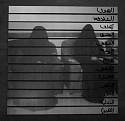

In Landscapes of the Mind, Al Dowayan reflects upon herself as a person, a symbol, a representative of a society and nation existing within a geographical construct. In her landscapes, the mountains, roads, buildings and structures are covered with symbols that obscure their true existence, blurring the simple reality of the visual scene. This conflict is intensified by the artist’s own existence within the space, rather than landscape, to which she belongs. The result is a surreal landscape which allows Manal to manipulate, reinvent and repackage the reality of her geography and space without physically altering it.
Landscape is an intensely visual concept. People do not live in landscapes - they observe them. The viewer is by definition an outsider. Media images portray Saudi Arabia as a landscape of black figures floating in a space of absence. Interpretations of history and tradition emanating from memory are intermingled with stereotypes and preconceptions. Ultimately, it is a landscape in conflict with itself.
Al Dowayan also reassesses contexts of space and power, confronting the forces that dictate the rules of existence in her landscapes. She adds a layer of self-reflection driven by the desire to understand who holds the power to define perspectives and stereotypes: the observed, the observer, the artist or the outsider?
In Landscapes of the Mind, Al Dowayan reflects upon herself as a person, a symbol, a representative of a society and nation existing within a geographical construct. In her landscapes, the mountains, roads, buildings and structures are covered with symbols that obscure their true existence, blurring the simple reality of the visual scene. This conflict is intensified by the artist’s own existence within the space, rather than landscape, to which she belongs. The result is a surreal landscape which allows Manal to manipulate, reinvent and repackage the reality of her geography and space without physically altering it.
Landscape is an intensely visual concept. People do not live in landscapes - they observe them. The viewer is by definition an outsider. Media images portray Saudi Arabia as a landscape of black figures floating in a space of absence. Interpretations of history and tradition emanating from memory are intermingled with stereotypes and preconceptions. Ultimately, it is a landscape in conflict with itself.
Al Dowayan also reassesses contexts of space and power, confronting the forces that dictate the rules of existence in her landscapes. She adds a layer of self-reflection driven by the desire to understand who holds the power to define perspectives and stereotypes: the observed, the observer, the artist or the outsider?
In Landscapes of the Mind, Al Dowayan reflects upon herself as a person, a symbol, a representative of a society and nation existing within a geographical construct. In her landscapes, the mountains, roads, buildings and structures are covered with symbols that obscure their true existence, blurring the simple reality of the visual scene. This conflict is intensified by the artist’s own existence within the space, rather than landscape, to which she belongs. The result is a surreal landscape which allows Manal to manipulate, reinvent and repackage the reality of her geography and space without physically altering it.
Landscape is an intensely visual concept. People do not live in landscapes - they observe them. The viewer is by definition an outsider. Media images portray Saudi Arabia as a landscape of black figures floating in a space of absence. Interpretations of history and tradition emanating from memory are intermingled with stereotypes and preconceptions. Ultimately, it is a landscape in conflict with itself.
Al Dowayan also reassesses contexts of space and power, confronting the forces that dictate the rules of existence in her landscapes. She adds a layer of self-reflection driven by the desire to understand who holds the power to define perspectives and stereotypes: the observed, the observer, the artist or the outsider?
In Landscapes of the Mind, Al Dowayan reflects upon herself as a person, a symbol, a representative of a society and nation existing within a geographical construct. In her landscapes, the mountains, roads, buildings and structures are covered with symbols that obscure their true existence, blurring the simple reality of the visual scene. This conflict is intensified by the artist’s own existence within the space, rather than landscape, to which she belongs. The result is a surreal landscape which allows Manal to manipulate, reinvent and repackage the reality of her geography and space without physically altering it.
Landscape is an intensely visual concept. People do not live in landscapes - they observe them. The viewer is by definition an outsider. Media images portray Saudi Arabia as a landscape of black figures floating in a space of absence. Interpretations of history and tradition emanating from memory are intermingled with stereotypes and preconceptions. Ultimately, it is a landscape in conflict with itself.
Al Dowayan also reassesses contexts of space and power, confronting the forces that dictate the rules of existence in her landscapes. She adds a layer of self-reflection driven by the desire to understand who holds the power to define perspectives and stereotypes: the observed, the observer, the artist or the outsider?
This collection is influenced by an ongoing dialogue that affects Arab women’s lives everyday; a dialogue that discusses the restrictions placed on women due to local traditions that have become entwined with religion and identity. Identity preservation among all cultures is strongly linked to traditions. As our societies rapidly develop to keep up with our changing world, people cling to certain traditions for a sense of safety. Local traditions should not be left unexamined. Women represent half of all communities. Therefore their potential and energy become valuable resources for a
healthy society. If traditions are used as a tool to suppress and control, our communities will become handicapped. Acknowledging women’s goals and embracing their achievements is essential to reach a needed state of societal balance.
This collection is influenced by an ongoing dialogue that affects Arab women’s lives everyday; a dialogue that discusses the restrictions placed on women due to local traditions that have become entwined with religion and identity. Identity preservation among all cultures is strongly linked to traditions. As our societies rapidly develop to keep up with our changing world, people cling to certain traditions for a sense of safety. Local traditions should not be left unexamined. Women represent half of all communities. Therefore their potential and energy become valuable resources for a healthy society. If traditions are used as a tool to suppress and control, our communities will become handicapped. Acknowledging women’s goals and embracing their achievements is essential to reach a needed state of societal balance.
This collection is influenced by an ongoing dialogue that affects Arab women’s lives everyday; a dialogue that discusses the restrictions placed on women due to local traditions that have become entwined with religion and identity. Identity preservation among all cultures is strongly linked to traditions. As our societies rapidly develop to keep up with our changing world, people cling to certain traditions for a sense of safety. Local traditions should not be left unexamined. Women represent half of all communities. Therefore their potential and energy become valuable resources for a healthy society. If traditions are used as a tool to suppress and control, our communities will become handicapped. Acknowledging women’s goals and embracing their achievements is essential to reach a needed state of societal balance.
This collection is influenced by an ongoing dialogue that affects Arab women’s lives everyday; a dialogue that discusses the restrictions placed on women due to local traditions that have become entwined with religion and identity. Identity preservation among all cultures is strongly linked to traditions. As our societies rapidly develop to keep up with our changing world, people cling to certain traditions for a sense of safety. Local traditions should not be left unexamined. Women represent half of all communities. Therefore their potential and energy become valuable resources for a healthy society. If traditions are used as a tool to suppress and control, our communities will become handicapped. Acknowledging women’s goals and embracing their achievements is essential to reach a needed state of societal balance.
This collection is influenced by an ongoing dialogue that affects Arab women’s lives everyday; a dialogue that discusses the restrictions placed on women due to local traditions that have become entwined with religion and identity. Identity preservation among all cultures is strongly linked to traditions. As our societies rapidly develop to keep up with our changing world, people cling to certain traditions for a sense of safety. Local traditions should not be left unexamined. Women represent half of all communities. Therefore their potential and energy become valuable resources for a healthy society. If traditions are used as a tool to suppress and control, our communities will become handicapped. Acknowledging women’s goals and embracing their achievements is essential to reach a needed state of societal balance.
This collection is influenced by an ongoing dialogue that affects Arab women’s lives everyday; a dialogue that discusses the restrictions placed on women due to local traditions that have become entwined with religion and identity. Identity preservation among all cultures is strongly linked to traditions. As our societies rapidly develop to keep up with our changing world, people cling to certain traditions for a sense of safety. Local traditions should not be left unexamined. Women represent half of all communities. Therefore their potential and energy become valuable resources for a healthy society. If traditions are used as a tool to suppress and control, our communities will become handicapped. Acknowledging women’s goals and embracing their achievements is essential to reach a needed state of societal balance.
Cities have sounds. The sound is ever-present, an expanding and contracting energy resonating within a single space. The city inhales, with difficulty, tension building, until it exhales - an intense release. With every breath the city takes, people gravitate towards it with a longing for the happiness that it promises. Little do they know, however, that when a city breathes, suffocation is bound to follow.
The city acts as a theatrical backdrop; it sets the scene and mood of the act to come. The city gives you the details, but not the story. We are mere props that complete the urban landscape. As the city grows its inhabitants slowly lose themselves, their identity, and eventually blend into this backdrop. Millions of people exist in anomie, surrounded by communities that they do not identify with. Every day, they live between concrete walls and are transported en masse to other concrete locations. They live suspended between states of consciousness and unconsciousness; existence plagued by isolation within congestion.
This context has spurred underground cultures that negate its imposed harmony, cultures with an anarchic spirit that refuse to be tied down by a framework or a definition. They bubble under the surface, exploring creative destruction and escapism. They try to dilute their solitude by reconnecting to their long lost love of the city. They seek emotional salvation at any cost.
This series of works depicts an imagined conversation between urban inhabitants and their cityscape. It is an unstable, symbiotic relationship in a constant state of uncertainty. It is a romance on the verge of collapse.
The artworks comprise delicate black and white prints representing the city, an elegant stage for the dialogue set forth. The conversation between the city and its inhabitants is represented with words and images that are superimposed with lights, buff-proof spray paint and ink. The rough and flashy medium of the foreground only further amplifies the people’s constant need for attention and reconciliation. The inhabitant asks, “Are you mine forever? Do you share my dreams? Do you long for me?” In response the city exhales.
As one of the most deprived social groups in terms of human rights, women are usually the source of hope and inspiration for their families and communities. The power that you sense from the firm pointing towards the dark unknown reflects the determination of many women in the Middle East and beyond, who continue the struggle to build a better world for their daughters and granddaughters, often with no hope of seeing their dreams become a reality. Knowing this, they continue to point to
the future.
“Pointing to the Future” brings together Saudi women’s hands—different tribes, ages, and social backgrounds. One does not differentiate between the hands as they all point to the same goal.
As one of the most deprived social groups in terms of human rights, women are usually the source of hope and inspiration for their families and communities. The power that you sense from the firm pointing towards the dark unknown reflects the determination of many women in the Middle East and beyond, who continue the struggle to build a better world for their daughters and granddaughters, often with no hope of seeing their dreams become a reality. Knowing this, they continue to point to
the future.
“Pointing to the Future” brings together Saudi women’s hands—different tribes, ages, and social backgrounds. One does not differentiate between the hands as they all point to the same goal.
Cities have sounds. The sound is ever-present, an expanding and contracting energy resonating within a single space. The city inhales, with difficulty, tension building, until it exhales - an intense release. With every breath the city takes, people gravitate towards it with a longing for the happiness that it promises. Little do they know, however, that when a city breathes, suffocation is bound to follow.
The city acts as a theatrical backdrop; it sets the scene and mood of the act to come. The city gives you the details, but not the story. We are mere props that complete the urban landscape. As the city grows its inhabitants slowly lose themselves, their identity, and eventually blend into this backdrop. Millions of people exist in anomie, surrounded by communities that they do not identify with. Every day, they live between concrete walls and are transported en masse to other concrete locations. They live suspended between states of consciousness and unconsciousness; existence plagued by isolation within congestion.
This context has spurred underground cultures that negate its imposed harmony, cultures with an anarchic spirit that refuse to be tied down by a framework or a definition. They bubble under the surface, exploring creative destruction and escapism. They try to dilute their solitude by reconnecting to their long lost love of the city. They seek emotional salvation at any cost.
This series of works depicts an imagined conversation between urban inhabitants and their cityscape. It is an unstable, symbiotic relationship in a constant state of uncertainty. It is a romance on the verge of collapse.
The artworks comprise delicate black and white prints representing the city, an elegant stage for the dialogue set forth. The conversation between the city and its inhabitants is represented with words and images that are superimposed with lights, buff-proof spray paint and ink. The rough and flashy medium of the foreground only further amplifies the people’s constant need for attention and reconciliation. The inhabitant asks, “Are you mine forever? Do you share my dreams? Do you long for me?” In response the city exhales.
Cities have sounds. The sound is ever-present, an expanding and contracting energy resonating within a single space. The city inhales, with difficulty, tension building, until it exhales - an intense release. With every breath the city takes, people gravitate towards it with a longing for the happiness that it promises. Little do they know, however, that when a city breathes, suffocation is bound to follow.
The city acts as a theatrical backdrop; it sets the scene and mood of the act to come. The city gives you the details, but not the story. We are mere props that complete the urban landscape. As the city grows its inhabitants slowly lose themselves, their identity, and eventually blend into this backdrop. Millions of people exist in anomie, surrounded by communities that they do not identify with. Every day, they live between concrete walls and are transported en masse to other concrete locations. They live suspended between states of consciousness and unconsciousness; existence plagued by isolation within congestion.
This context has spurred underground cultures that negate its imposed harmony, cultures with an anarchic spirit that refuse to be tied down by a framework or a definition. They bubble under the surface, exploring creative destruction and escapism. They try to dilute their solitude by reconnecting to their long lost love of the city. They seek emotional salvation at any cost.
This series of works depicts an imagined conversation between urban inhabitants and their cityscape. It is an unstable, symbiotic relationship in a constant state of uncertainty. It is a romance on the verge of collapse.
The artworks comprise delicate black and white prints representing the city, an elegant stage for the dialogue set forth. The conversation between the city and its inhabitants is represented with words and images that are superimposed with lights, buff-proof spray paint and ink. The rough and flashy medium of the foreground only further amplifies the people’s constant need for attention and reconciliation. The inhabitant asks, “Are you mine forever? Do you share my dreams? Do you long for me?” In response the city exhales.
Cities have sounds. The sound is ever-present, an expanding and contracting energy resonating within a single space. The city inhales, with difficulty, tension building, until it exhales - an intense release. With every breath the city takes, people gravitate towards it with a longing for the happiness that it promises. Little do they know, however, that when a city breathes, suffocation is bound to follow.
The city acts as a theatrical backdrop; it sets the scene and mood of the act to come. The city gives you the details, but not the story. We are mere props that complete the urban landscape. As the city grows its inhabitants slowly lose themselves, their identity, and eventually blend into this backdrop. Millions of people exist in anomie, surrounded by communities that they do not identify with. Every day, they live between concrete walls and are transported en masse to other concrete locations. They live suspended between states of consciousness and unconsciousness; existence plagued by isolation within congestion.
This context has spurred underground cultures that negate its imposed harmony, cultures with an anarchic spirit that refuse to be tied down by a framework or a definition. They bubble under the surface, exploring creative destruction and escapism. They try to dilute their solitude by reconnecting to their long lost love of the city. They seek emotional salvation at any cost.
This series of works depicts an imagined conversation between urban inhabitants and their cityscape. It is an unstable, symbiotic relationship in a constant state of uncertainty. It is a romance on the verge of collapse.
The artworks comprise delicate black and white prints representing the city, an elegant stage for the dialogue set forth. The conversation between the city and its inhabitants is represented with words and images that are superimposed with lights, buff-proof spray paint and ink. The rough and flashy medium of the foreground only further amplifies the people’s constant need for attention and reconciliation. The inhabitant asks, “Are you mine forever? Do you share my dreams? Do you long for me?” In response the city exhales.
I belong to a community of oil families that were spontaneously put together, they all took a collective life journey, and came back to create a culture of their own. This generation can never be replicated again, and for me it creates an impossible past to relate to … but I want to relate.
By constructing the memory of my late father’s generation of men and women at a different time than the one I knew him in, I wanted to create my own stories and personal narratives from the collective memories of these men and women … I wanted to own my past.
In times of uncertainty it becomes hard to predict the future, and by creating an emotional bond to the past I can place my self in the present and can have an understanding of the historical story I belong to … I wanted to own my future.
How do you photograph a memory that is forever changing? How do you capture a moment that existed 50 years ago in Saudi Arabia? I document the journey of the Oil men and women, one generation before me, who came from different facets of life and met each other at a single point where they took off to the future together.
Through conversations and objects that I capture, I create a hybrid experience that blurs the borders that separate the installation, the object and the photograph. I take you through an experiential journey that intensifies your sensory reactions to what is a “collective memory” of a group.
In one of my interviews an Oil man said “I was lucky to be part of a generation that saw their dreams become a reality” … I want to dream.
I belong to a community of oil families that were spontaneously put together, they all took a collective life journey, and came back to create a culture of their own. This generation can never be replicated again, and for me it creates an impossible past to relate to … but I want to relate.
By constructing the memory of my late father’s generation of men and women at a different time than the one I knew him in, I wanted to create my own stories and personal narratives from the collective memories of these men and women … I wanted to own my past.
In times of uncertainty it becomes hard to predict the future, and by creating an emotional bond to the past I can place my self in the present and can have an understanding of the historical story I belong to … I wanted to own my future.
How do you photograph a memory that is forever changing? How do you capture a moment that existed 50 years ago in Saudi Arabia? I document the journey of the Oil men and women, one generation before me, who came from different facets of life and met each other at a single point where they took off to the future together.
Through conversations and objects that I capture, I create a hybrid experience that blurs the borders that separate the installation, the object and the photograph. I take you through an experiential journey that intensifies your sensory reactions to what is a “collective memory” of a group.
In one of my interviews an Oil man said “I was lucky to be part of a generation that saw their dreams become a reality” … I want to dream.
I belong to a community of oil families that were spontaneously put together, they all took a collective life journey, and came back to create a culture of their own. This generation can never be replicated again, and for me it creates an impossible past to relate to … but I want to relate.
By constructing the memory of my late father’s generation of men and women at a different time than the one I knew him in, I wanted to create my own stories and personal narratives from the collective memories of these men and women … I wanted to own my past.
In times of uncertainty it becomes hard to predict the future, and by creating an emotional bond to the past I can place my self in the present and can have an understanding of the historical story I belong to … I wanted to own my future.
How do you photograph a memory that is forever changing? How do you capture a moment that existed 50 years ago in Saudi Arabia? I document the journey of the Oil men and women, one generation before me, who came from different facets of life and met each other at a single point where they took off to the future together.
Through conversations and objects that I capture, I create a hybrid experience that blurs the borders that separate the installation, the object and the photograph. I take you through an experiential journey that intensifies your sensory reactions to what is a “collective memory” of a group.
In one of my interviews an Oil man said “I was lucky to be part of a generation that saw their dreams become a reality” … I want to dream.
I belong to a community of oil families that were spontaneously put together, they all took a collective life journey, and came back to create a culture of their own. This generation can never be replicated again, and for me it creates an impossible past to relate to … but I want to relate.
By constructing the memory of my late father’s generation of men and women at a different time than the one I knew him in, I wanted to create my own stories and personal narratives from the collective memories of these men and women … I wanted to own my past.
In times of uncertainty it becomes hard to predict the future, and by creating an emotional bond to the past I can place my self in the present and can have an understanding of the historical story I belong to … I wanted to own my future.
How do you photograph a memory that is forever changing? How do you capture a moment that existed 50 years ago in Saudi Arabia? I document the journey of the Oil men and women, one generation before me, who came from different facets of life and met each other at a single point where they took off to the future together.
Through conversations and objects that I capture, I create a hybrid experience that blurs the borders that separate the installation, the object and the photograph. I take you through an experiential journey that intensifies your sensory reactions to what is a “collective memory” of a group.
In one of my interviews an Oil man said “I was lucky to be part of a generation that saw their dreams become a reality” … I want to dream.
I belong to a community of oil families that were spontaneously put together, they all took a collective life journey, and came back to create a culture of their own. This generation can never be replicated again, and for me it creates an impossible past to relate to … but I want to relate.
By constructing the memory of my late father’s generation of men and women at a different time than the one I knew him in, I wanted to create my own stories and personal narratives from the collective memories of these men and women … I wanted to own my past.
In times of uncertainty it becomes hard to predict the future, and by creating an emotional bond to the past I can place my self in the present and can have an understanding of the historical story I belong to … I wanted to own my future.
How do you photograph a memory that is forever changing? How do you capture a moment that existed 50 years ago in Saudi Arabia? I document the journey of the Oil men and women, one generation before me, who came from different facets of life and met each other at a single point where they took off to the future together.
Through conversations and objects that I capture, I create a hybrid experience that blurs the borders that separate the installation, the object and the photograph. I take you through an experiential journey that intensifies your sensory reactions to what is a “collective memory” of a group.
In one of my interviews an Oil man said “I was lucky to be part of a generation that saw their dreams become a reality” … I want to dream.
I belong to a community of oil families that were spontaneously put together, they all took a collective life journey, and came back to create a culture of their own. This generation can never be replicated again, and for me it creates an impossible past to relate to … but I want to relate.
By constructing the memory of my late father’s generation of men and women at a different time than the one I knew him in, I wanted to create my own stories and personal narratives from the collective memories of these men and women … I wanted to own my past.
In times of uncertainty it becomes hard to predict the future, and by creating an emotional bond to the past I can place my self in the present and can have an understanding of the historical story I belong to … I wanted to own my future.
How do you photograph a memory that is forever changing? How do you capture a moment that existed 50 years ago in Saudi Arabia? I document the journey of the Oil men and women, one generation before me, who came from different facets of life and met each other at a single point where they took off to the future together.
Through conversations and objects that I capture, I create a hybrid experience that blurs the borders that separate the installation, the object and the photograph. I take you through an experiential journey that intensifies your sensory reactions to what is a “collective memory” of a group.
In one of my interviews an Oil man said “I was lucky to be part of a generation that saw their dreams become a reality” … I want to dream.
I belong to a community of oil families that were spontaneously put together, they all took a collective life journey, and came back to create a culture of their own. This generation can never be replicated again, and for me it creates an impossible past to relate to … but I want to relate.
By constructing the memory of my late father’s generation of men and women at a different time than the one I knew him in, I wanted to create my own stories and personal narratives from the collective memories of these men and women … I wanted to own my past.
In times of uncertainty it becomes hard to predict the future, and by creating an emotional bond to the past I can place my self in the present and can have an understanding of the historical story I belong to … I wanted to own my future.
How do you photograph a memory that is forever changing? How do you capture a moment that existed 50 years ago in Saudi Arabia? I document the journey of the Oil men and women, one generation before me, who came from different facets of life and met each other at a single point where they took off to the future together.
Through conversations and objects that I capture, I create a hybrid experience that blurs the borders that separate the installation, the object and the photograph. I take you through an experiential journey that intensifies your sensory reactions to what is a “collective memory” of a group.
In one of my interviews an Oil man said “I was lucky to be part of a generation that saw their dreams become a reality” … I want to dream.
Athr Gallery is proud to usher in the new year with renowned Saudi artist Manal Al-Dowayan’s first solo exhibition in Saudi Arabia A Journey of Belonging, introducing new work by the artist as well as seminal work from her previous series. The exhibition explores the artist’s frequent voyages into the past in search of understanding and mutual acceptance.
Photographer, visual poet, and artist Manal Al Dowayan is one of the most recognizable and critically acclaimed of the new wave of Saudi contemporary artists. She has exhibited globally, from Belgium to Bahrain, and has been acquired by collections such as the British Museum, Nadour, Barjeel and the Jordan National Museum of Fine Art, amongst many others. Her show at Athr Gallery emphasizes not only her profound achievement and success, but re-affirms the Jeddah gallery’s commitment to supporting and showcasing the most innovative and thoughtful art of the region.
With the intersecting of key works from the artist’s different series under one roof, a pattern emerges, a common thread weaves itself through the works, one that gradually alters and transforms but remains unbroken. A journey comes to light. A Journey of Belonging allows the viewer to approach Al-Dowayan’s work from a new perspective. There is a paradigm shift in focus, with controversial issues of women’s rights and identity, normally associated with the artist’s work, fading into the background, and the artist’s personal fears and obsessions coming to the fore.
The artist was raised in a land whose modus operandi revolves around the repulsion and dismissal of women. Specializing in photography, her varied series consistently present meditations on the complex textures of a paradoxically evolving and traditional society, along with a distinct, deep-rooted sense of personal and collective history. Thus, the exhibited works reveal a young woman’s obsession with preservation and remembrance, and constitutes a fight against rejection and disappearance. They are an exploration of ways to exist somewhere that doesn’t want you.
Featured series such as ‘Pointing To The Future’, ‘Look Beyond The Veil’, ‘Landscapes Of The Mind’, ‘And We Had No Shared Dreams’ and ‘Blinded By Tradition’ display Al Dowayan’s progression and creative evolution over the years. Through these discrete series of works, Al Dowayan not only explores the role of women in Saudi Arabia, but reflects upon a wider reality in which gender equality is symptomatic of power hierarchies, religious dogmas, interplays with foreign cultures and shifting domestic social attitudes. Whilst her primary medium is photography, series such as ‘Point To The Future’ further demonstrate how the artist amplifies her characteristically monochrome compositions with lyrical visual language. Enriched by this poetic slant, the added layers allow her to weave a rich tapestry of cultural and formal styles that invite deeper consideration of the central themes.
Another recurring topic in Al Dowayan’s work is the relationship of the individual to their environment. For instance, Al Dowayan explores manifestations of progress and change in the physical textures of the country’s geography in ‘Landscapes Of The Mind’, which uses various locations around the country to frame deft, simple glyphs representing the self, and the individual’s relationship with her surroundings. The artist places herself amidst these symbols, relenting her hold upon her own identity and becoming undefinable and ephemeral against monumental natural and urban settings.
Similarly, the series ‘We Had No Shared Dreams’ is a conversation between the inhabitant and the landscape in which she lives, but to which she longs to belong. The inhabitant, like an abandoned child, desperately seeks acceptance, but the city only exhales in response..
‘If I Forget You, Don’t Forget Me’ reflects on the profound shifts in Saudi society over the past fifty years, documenting the rise of the oil industry through the individuals who were there at the start of the oil boom. But in this series, Al Dowayan goes beyond a narrative re-telling of contemporary social evolution and instead looks for her own identity and self amidst the turbulent histories of immediately preceding generations, hoping to discover amidst the plenitude of the past, clues and possibilities for the uncertain future.
In her latest body of work, Al Dowayan continues to explore the practice of preservation via one of the oldest and time-tested means of documentation, language. In particular, Arabic, a language lauded for its beauty and complexity. The artist adopts as a case study Abu Mansour Al-Tha’alby Al-Naysaboury’s “Jurisprudence of a Language: The Secrets of Arabic”, a 10th century Abassid tome that contains detailed categorizations of thousands of Arabic words. In the process, she discovers that what is not rendered useful, is actively erased over time, bringing her to question even herself;
“In my fervour to document my present, am I contributing to a failed formula?”
Aldowayan’s new work investigates what Nietzsche termed “active forgetting” and is a warning against the act of labelling diverse collectives that efface the singular, for by attempting to preserve by creating our own version of history, we are in fact contributing to the erasure of others.
Al Dowayan’s work reacts vividly to the restrictions imposed upon women in 21st century Saudi Arabia. This is powerfully evident in ‘A Journey Of Belonging’. Athr Gallery have selected works that show Al Dowayan’s evolution as an artist, as a Saudi woman and as a lightening rod for sparks and flashes of progress and change within the strictures of her environment. However, ultimately, it gives a unique and candid perspective of the intense and idiosyncratic relationship that exists between a woman and her homeland, exploring feelings of alienation, belonging, identity, even self-doubt, but above all, love.


